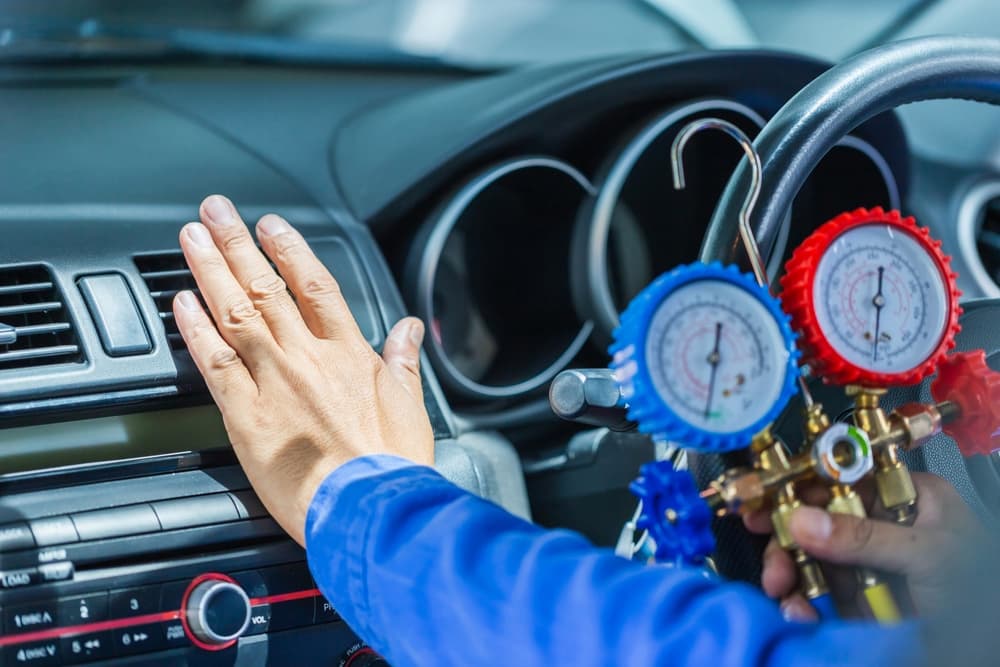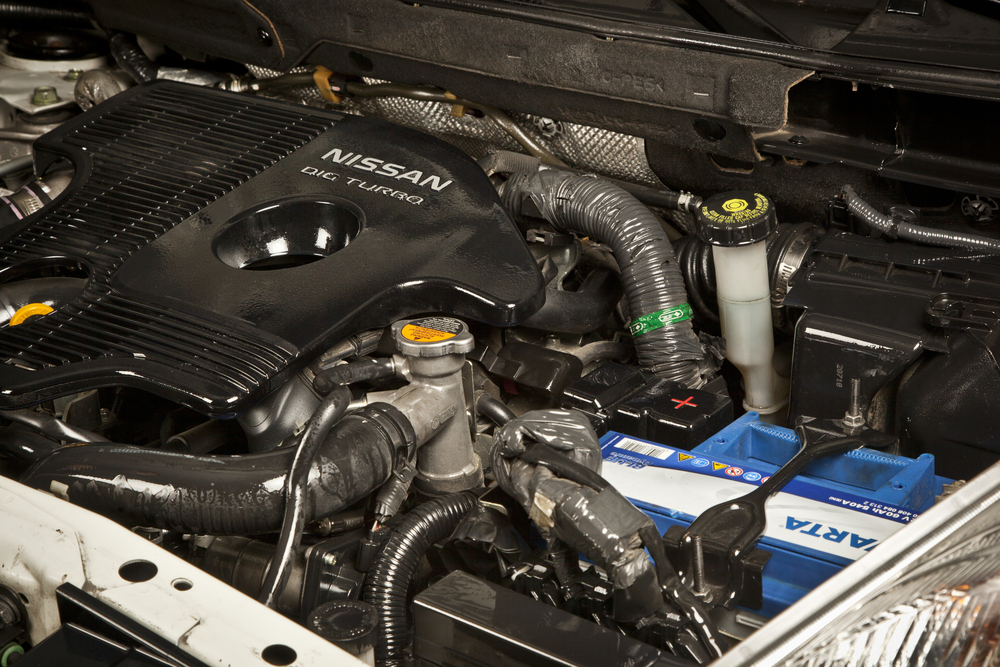While once manufactured solely for military use, Jeeps have become a symbol of rugged outdoor adventure. If your Jeep, however, is a lemon, the related financial loss – along with the safety concerns – can be significant. Fortunately, there is a California lemon law in place to help. Lemon laws are designed to protect the consumer and to give the manufacturer an opportunity to fix the problem before applying legal remedies.

When it comes to identifying a Jeep as a lemon, there is no clear-cut test. There are elements, however, to consider. To begin, the Jeep must have a defect that is considered substantial, which means that it impairs the vehicle’s use, value, or safety. From here, the defect must remain after the dealership has been given several – or a reasonable number – of opportunities to address the concern, or the Jeep must have remained at the dealership for repairs for more than 30 cumulative – rather than consecutive – days.
Determining if the defect reaches the level of qualifying the Jeep as a lemon comes down to determining whether or not it affects the vehicle’s use, value, or safety. Consider the following:
Ultimately, the defect you’re experiencing doesn’t have to relate to the Jeep’s safety to qualify the vehicle as a lemon, but if the defect does affect the vehicle’s safety, two attempts by the dealership to correct the matter are likely to qualify as a reasonable number.
It’s important to note that every lemon law claim is determined on a case-by-case basis, and the unique circumstances of your case will guide the outcome. If you have experienced any of the following within the Jeep’s first 18,000 miles or 18 months, it’s presumed to be a lemon under California law:
You should know that your Jeep doesn’t have to be brand new or to have very few miles on it to qualify for lemon law protections. For example, if you brought the vehicle in for its first related repair prior to its warranty’s ending, your Jeep may qualify.
If your new Jeep is determined to be a lemon, it can lead to either a buyback or replacement – depending on your preference. If your vehicle is replaced, you’ll be provided with another that is substantially identical, and if Jeep buys your vehicle back, you’re entitled to the original sale price – as offset by the number of miles you put on it prior to the first related repair.

Jeeps have their fair share of defects, and a sampling of the most common includes the following:

Several Jeep models and years that are noted for having serious defects include the following:

Jeep’s water leak issues are widespread, and they have been a major concern for Jeep owners throughout the past several years. These leaks can happen in nearly every spot there is for water to enter the cabin, and they can exacerbate the allergies of owners and their passengers. They are also closely linked to electrical shorts in Jeep vehicles – along with other mechanical issues.

The Jeep death wobble deserves a bit of attention all its own. This defect is so common it’s earned its own ominous title, and it refers to a mechanical defect in the Jeep that’s caused by damaged, misaligned, or loose parts in the vehicle’s steering system or suspension.
When you get your Jeep up to speed, or you’re traveling on rough terrain, this mechanical defect can shake the vehicle to the point that it wobbles. There have been instances when even experienced all-terrain Jeep drivers have lost control of their vehicles when the dreaded wobble sets in.
A defect in any one of the following parts – or any combination of the following parts – can lead to a death wobble:
Alignment concerns can also be the cause, especially for those Jeeps that are either lifted or lowered.

According to the National Highway Traffic Safety Administration (NHTSA), the 2014 Jeep Cherokee is the most prone to issues – with 13 recalls and 2,325 complaints. Nonetheless, it earned four stars out of five on its overall safety rating. The Jeep Wrangler, on the other hand, tends to receive the fewest complaints and to have fewer recalls compared to other Jeep models, which can vary, however, from year to year.
Call 833-536-5297 or fill out our simple online form to set up a consultation with the Lemon Law Lady in California
In addition to Jeep’s infamous death wobble, there are other primary manufacturing concerns.

A common manufacturing suspension issue on Jeep models beginning in 2005 is related to the electronic sway bar disconnect system, which is also known as the stabilizer or anti-roll bar. This component of the suspension helps keep the Jeep level and prevents excess swaying when moving through turns. While Jeep’s suspension in this regard works well on roadways, articulation is reduced in relation to off-roading.

Some Jeeps – especially those with 4.0-liter six-cylinder engines – are vulnerable to exhaust leaks. These are related to cracks in the exhaust manifold that are the result of repeated heating and cooling cycles. Common warning signs include ticking sounds, exhaust fumes that come from the engine bay, or even reduced gas mileage.

Some Jeeps from 2006 and 2007 experienced an ignition switch fault that caused the vehicle to switch off while driving and led to an NHTSA recall in 2015.

Certain Jeep models have faulty window motors and regulators that can cause the window to drop into the door suddenly – while driving – or can lead to the window motor burning out and failing to work at all. The problem is often a misaligned or damaged regulator.

Jeep’s totally integrated power module operates the electrical system for many newer Jeeps. Faults in the relay center are not uncommon, and they can lead to issues with any of the following:
These issues can prove dangerous. For example, some Wrangler owners have experienced sudden losses of power. Others haven’t been able to start their vehicles at all. Additional issues can include random horn honking, random window movement, and random door locking and unlocking. Many owners describe the phenomenon as their Jeeps having minds of their own.

A vehicle’s transmission delivers the correct amount of power to the wheels for driving at a designated speed, and some Jeeps have had transmission issues related to the involved electronic components. Shifting is a primary concern. Signs that your transmission may be affected include:

Jeep owners tend to be all about off-roading, but they don’t expect outside weather to find its way into the cabins of their vehicles. Several Jeep models, however, experience leaking from the upper corners of the front doors, which can lead to wet interiors. Some leaks are worse than others, leaving some owners with actual pooling on their floors.
About 12,500 Jeep Grand Cherokees potentially have issues that could lead to their engines shutting down due to lost communication between the hybrid control processor and the transmission control module. An engine shutdown of this nature can lead to an unexpected loss of power, which increases the risk that a dangerous crash will happen considerably.
About 331,400 Jeep Grand Cherokees may have incorrectly installed rear coil springs that can detach from the vehicles while driving, which significantly increases the chances that accidents will happen.
About 80,600 Jeep Grand Cherokees that are equipped with 3.0L diesel engines have crankshaft position sensor tone wheels that could malfunction – causing engines to lose synchronicity with fuel injector pulses and camshaft timing in the process. This can lead to engines that stall, which – in turn – can lead to dangerous accidents.
About 89,400 Grand Cherokees could have incorrectly assembled steering column intermediate shafts that, as a result, could disconnect from the u-joint and lead to a loss of control in relation to steering.
Another recall for Grand Cherokees relates to about 17,000 that may have missing airbag warning labels on the dashboard, which means they fail to comply with federal requirements regarding occupant crash protection.
About 132,000 Cherokees that are equipped with power liftgates have been recalled due to an electrical short in the liftgate module that can lead to a vehicle fire – whether the vehicle’s ignition is on or off.
California’s lemon law specifically states that car manufacturers should be afforded a reasonable number of repair attempts prior to the lemon law applying. What a reasonable number is, however, is up for grabs. In other words, each case must be evaluated based on the unique circumstances involved. Generally, if the issue with the vehicle is safety-related, two attempts to correct or repair the defect is considered reasonable, but if the issue is more of a nuisance than a safety risk, a greater number of repair attempts are likely to be afforded.
Some important points to keep in mind regarding determining a reasonable number of repair attempts include the following:
Determining whether you qualify for relief under lemon laws can be difficult. Fortunately, an experienced lemon law attorney in California is ready to assess your options and pursue any compensation you deserve.